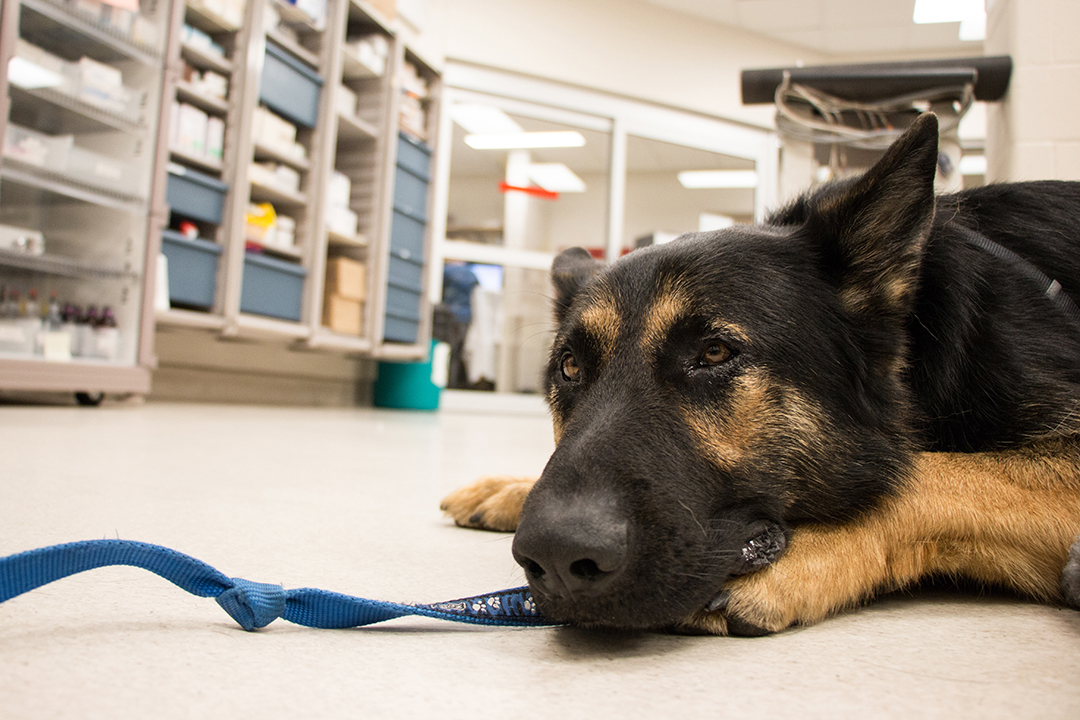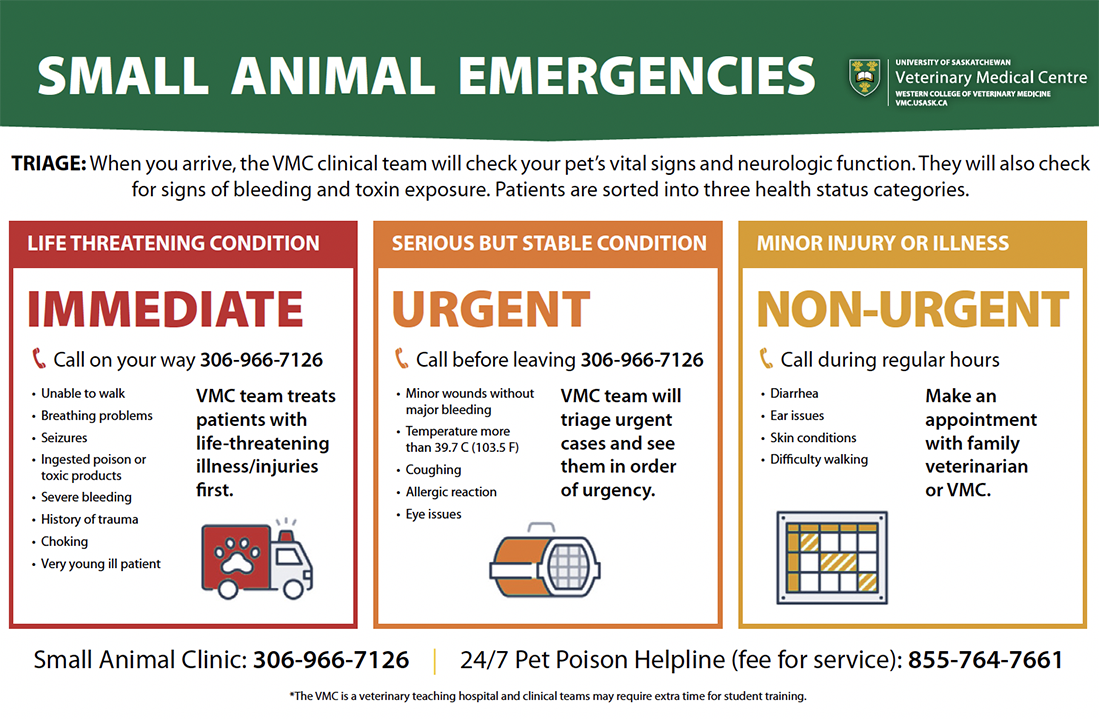
Emergency needs increase with pet ownership boom
As the only 24-hour veterinary hospital in Saskatoon and area, the Western College of Veterinary Medicine’s (WCVM) Veterinary Medical Centre (VMC) is experiencing increased demand for its services.
By Jeanette Neufeld“The VMC emergency service has been busier, especially over the past year. This is not just a VMC problem but something we’re seeing across North America,” says Dr. Jen Loewen, a board-certified specialist in emergency and critical care at the WCVM. “As pet ownership has increased the number of vets hasn’t increased at the same rate.”
While the veterinary profession is struggling to meet this increased demand, it’s also experiencing labour shortages of both veterinarians and registered veterinary technologists (RVTs). For the VMC’s small animal emergency and critical care service, another challenge is finding clinicians and RVTs who are trained to deal with emergency situations.
When a sick or injured pet arrives at the VMC, a senior veterinary student or an RVT conduct an initial physical examination and assessment to determine if the animal’s condition is life threatening. The entire team plays a role in this triage or “sorting” process, with much discussion between the clinicians and RVTs.
“If all cases are deemed stable, we’ll go in the first-come-first-served basis, with the allowance that if a more unstable patient comes in the meantime, that patient will jump the queue,” says Loewen.
The most critical cases can include animals hit by vehicles or pets that are experiencing excessive bleeding, breathing problems, choking or high temperatures (over 103.5 F or 39.7 C). Pets that have been exposed to poison or toxic products, very young patients and service animals are also considered top priority.

Cases considered to be serious but not life threatening would include wounds without major bleeding, high temperatures, coughing, allergic reaction or eye problems. The clinical team sees these cases on a first-come-first-served basis.
For other minor injuries or illnesses such as diarrhea, ear issues or skin conditions, the VMC’s team advises owners to see their family veterinarian or be aware that there may be a long wait to see a VMC clinician.
While some owners may become impatient waiting for their pets to receive care, Loewen points out that a longer wait time typically means that a pet’s health is more stable compared to other incoming patients.
“The other thing that’s important to remember is that we are also a teaching hospital,” says Loewen. “Teaching is something we’re doing as well to allow our fourth-year clinical students to get the appropriate training for them to successfully become veterinarians.”
Loewen stresses that owners should call ahead before bringing their pet to the hospital. If an animal’s condition is life threatening, advance notice will ensure that the VMC’s clinical team is ready.
“Giving the emergency clinic a call is very helpful. If we know a case is coming in in serious condition, that helps us plan accordingly,” says Loewen.
Call 306-966-7126 to contact the WCVM Veterinary Medical Centre or visit vmc.usask.ca.
